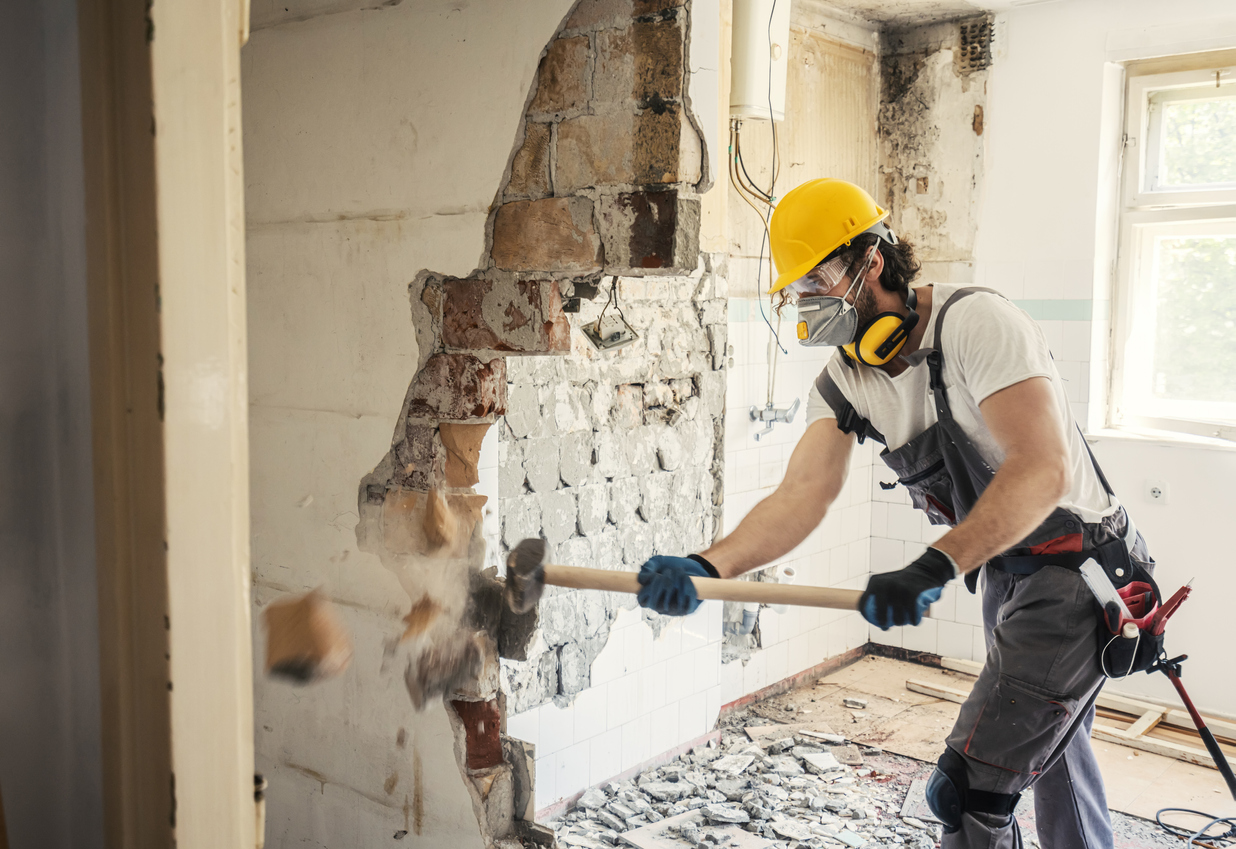Ordinance and Law coverage is often overlooked and confusing when trying to figure out how it is applied to a loss. Most property insurance policies first exclude the increased costs caused by ordinances and laws and then give it back through endorsements or additional coverages subject to limits. Just the meaning of the exclusion, without considering the gap-filling coverage, is confusing for many and wrongly used by insurers to deny what should be a direct payment under general coverage A repair costs.
We have written on the Ordinance and Law topic many times before. I recommend that those involved with property insurance claims search our blog for our numerous posts on the topic and read Understanding Commercial and Residential Ordinance and Law Coverage as Explained by Christopher Boggs. Enforcement of building codes might be the most contentious topic, and I suggest at least reading The Insurer Disagrees With the Building Official and Will Not Pay Ordinance or Law Coverage—Find Out What To Do By Watching Tuesday at 2 With Chip, and an excellent post by Ed Eshoo, What Constitutes Enforcement of a Building Ordinance or Law?
A recent appellate decision from Minnesota1 ruled on what the demolition and value provisions mean under the typical Ordinance and Law Coverage A extension. The basic facts are as follows:
Ridgewood Bay Resort Inc. owns and operates a lakeside restaurant and bar that caught fire in August 2017. The fire damaged the structure and business personal property in the bar area and caused smoke damage elsewhere in the building. According to Ridgewood Bay, state and county agencies inspected the building following the fire and ordered that the ADA-noncompliant bathrooms and the undamaged kitchen vent hood, kitchen walls and flooring, and septic system be brought up to code before the restaurant could reopen…. The O&L endorsement lists four coverage types, one of which, Coverage A, provides coverage up to the full building-coverage limit of $400,800, while the other three, Coverages B-D, each cover up to a $10,000 limit, all subject to a $1,000 deductible.
The dispute was noted to be:
Auto-Owners did not dispute that Ridgewood Bay’s building also sustained covered physical damage; however, the parties disagreed on which provisions of the O&L endorsement apply to the work that the state and county agencies must require to bring the building into compliance with applicable codes. Auto-Owners took the position that Ridgewood Bay is limited to Coverage C; thus, Coverage A and Coverage B do not apply….
… Ridgewood Bay asked the district court to find that Coverage A applies to its claim for code-required upgrades. Auto-Owners countered that the only potentially available coverage for code-required upgrades is Coverage C and alleged that questions of fact existed on whether the preexisting-violation exclusion precluded coverage.
The appellate court quoted the Ordinance and Law Coverage A, B, and C language in the policy:
Coverage A – Coverage For Loss to The Undamaged Portion Of The Building.
With respect to a covered building that has sustained covered direct physical damage, we will pay under Coverage A for the loss in value of the undamaged portion of the building as a consequence of enforcement of an ordinance or law that requires demolition of undamaged parts of the same building.
Coverage B – Demolition Cost Coverage.
With respect to a covered building that has sustained covered direct physical damage, we will pay the cost to demolish and clear the site of undamaged parts of the same building, as a consequence of enforcement of an ordinance or law that requires Demolition of such undamaged property.
Coverage C – Increased Cost Of Construction Coverage.
a. With respect to a covered building that has sustained covered direct physical damage, we will pay the increased cost to:
(1) Repair or reconstruct damaged portions of that building; and/or
(2) Reconstruct or remodel undamaged portions of that building, whether or not demolition is required when the increased cost is a consequence of enforcement of the minimum requirements of the ordinance or law.
The very important part of the decision analyzed these and ruled for the policyholder:
Auto-Owners asserts that Coverages A and B can only have one reasonable meaning, arguing that the common, ordinary understanding of the word ‘demolition’ is destruction, leveling, or razing, not tearing out or removing materials as part of a remodeling project, and that when Coverages A, B, and C are read together, the differences between the coverage applications are apparent. Under Auto-Owners’s reading, Coverages A and B apply when an ordinance or code requires demolition of part of the building—whether demolition is expressly included in the code or ordinance, or if a building official orders part of the building to be demolished as a requirement of the code or ordinance—whereas Coverage C applies to the cost of repairs or remodeling required by the code or ordinance, including any related demolition.
Ridgewood Bay argues that the phrase ‘as a consequence of enforcement of an ordinance or law that requires demolition of undamaged parts’ included in Coverage A and B applies to situations like Ridgewood Bay’s, where as a result of enforcement of a code, upgrades are required that cannot be accomplished unless some level of interior demolition takes place. The district court found this interpretation of Coverage A, meaning an ordinance or law requires remodeling of undamaged parts of the building, and demolition is a component of the remodeling, to be reasonable. We agree.
So do I. I have been arguing this same point for years. Most Ordinance and Law coverages extend “the value” for coverage A to the policy limits because that value is already insured. The undamaged building is insured for “x” under the general Coverage A policy limits, and it only makes sense to insure it again for “x” for the Law & Ordinance Coverage A limits. The more difficult question for those trying to determine what limits to purchase are found under the Ordinance and Law coverages for B and C. Agents and those advising about those limits should read Law and Ordinance Coverage C Limits of Coverage—How Much to Obtain?
The appellate court explained its rationale:
We are unconvinced that Coverage A or B applies only when the demolition itself is required either by the ordinance or law or by its enforcement, but not when the code-required upgrades have a demolition component, because this is not what the language of the coverage provision says. Nor do we agree that this is the only reasonable interpretation of Coverages A and B, because Coverage C applies in cases where demolition occurs as a consequence of complying with the requirements of an ordinance or law. We observe that Coverage C could also be understood to provide coverage for increased reconstruction costs associated with code compliance in situations involving demolition or no demolition. Such an interpretation would give effect to all provisions. We also note that while dictionary definitions support a contention that the common understanding of ‘demolish’ is to tear down, break apart, or raze, the actions contemplated in the O&L endorsement exist in a building construction and rehabilitation context, in which the idea that one can ‘demolish’ fixtures and interior components, such as cabinets or a sink, is not an uncommon usage of the term. And the Loss Payment provision associated with Coverage A provides coverage for ‘the amount [insured] would actually spend to repair, rebuild or reconstruct the building.’… This cuts against the contention that ‘demolition’ in Coverage A can only mean razing or leveling the structure because under that interpretation, there would be no repairs to cover.
The district court correctly concluded that the terms ‘demolition’ and ‘requires’ are ambiguous here, given both Auto-Owners’s interpretation that demolition only means destruction, leveling, or razing a building or a portion of a building as required by enforcement of a code or ordinance and Ridgewood Bay’s interpretation that demolition can mean tearing out a portion of a building or removing materials when remodeling as required to bring the building up to code. Because Coverages A and B are subject to more than one reasonable interpretation, they are ambiguous, and thus the contract must be construed in favor of Ridgewood Bay as the insured.
While most companies have no problem paying for this value, most simply forget that the “value” is owed right away under the Coverage A loss payment provisions. Auto-Owners, or its clever counsel looking for a new way to defeat coverage and win the case, tried to make an additional argument that “Coverage A cannot apply because the elements in need of code-mandated updates did not sustain any loss in value.” The court clearly was not impressed by this new argument which I have never heard of in my long experience dealing with these issues:
Ridgewood Bay argues that it has clearly sustained a loss in value because unless it submits plans to bring the building into compliance and performs the code-required upgrades, county and state officials will not issue permits to finish repairing the damage to the building caused by the fire, and no certificate of occupancy to operate will be issued, leaving Ridgewood Bay with a damaged, unusable building which is ‘essentially worthless.’ In support of this argument, Ridgewood Bay points to a report prepared for Auto-Owners by a third-party forensic-design consultant stating that, as part of the permitting process for fire restoration, the county building official required conversion of the restrooms to meet ADA requirements in compliance with the Minnesota State Building Code, and, without those updates, no permit to repair the fire damage would be issued. The same report also notes that until the noncompliant septic system is updated, and the kitchen walls, floor, ceiling, and vent hood are brought into compliance with Minnesota Health Department rules, Ridgewood Bay is unable to reopen.
We conclude that Ridgewood Bay has sufficiently pointed to facts in the record to demonstrate a loss in value, defeating Auto-Owners’s assertion that Coverage A does not apply as a matter of law. We reject Auto-Owners’s argument that there can be no loss in value if upgrades occur as part of repairing or rebuilding, as it is possible that properties remodeled or rebuilt due to code-required changes could lose rather than gain value. We agree with the district court’s observation that “loss in value cannot be understood independently from costs related to repair, rebuilding, or reconstruction because that is how payment for the loss would be determined” under the Loss Payment provision of the policy.
I want to give a big shout-out to public adjuster Mike Pakkala, Sr., who assisted the policyholder after this loss. His affidavit explains the typical types of roadblocks that come up in property loss adjustments and why in my book, PayUP!, I suggest that policyholders with any serious loss consider hiring a public adjuster. Mike’s firm is a member of the National Association of Public Insurance Adjusters (NAPIA). Mike Pakkala will soon be celebrating his 50th year as a licensed public adjuster.
Thought For The Day
And I don’t think that government has a role in telling people how to live their lives. Maybe a minister does, maybe your belief in God does, maybe there’s another set of moral codes, but I don’t think government has a role.
—Clarence Thomas
_______________________________________________
1 Ridgewood Bay Resort v. Auto-Owners Ins. Co., No A21-1352 (Minn. App. June 20, 2022).




